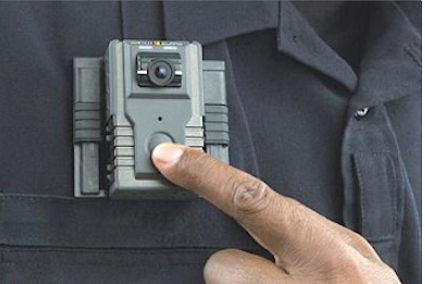
We're severely under-facilitated, Ipoa boss says
Ipoa still depends on the Interior ministry to approve it's funding
The authority said the move will help prevent police misconduct, preserve crucial evidence.
In Summary

Police watchdog Ipoa now wants anti-riot police to put on body cameras, and a videography team from the National Police Service deployed during protests to curb excessive use of force.
The Independent Policing Oversight Authority, in a report, says the move would help prevent police misconduct, preserve crucial evidence and simplify identification of officers.
It would also ensure better documentation of events during public demonstrations.
The authority, led by chairperson Issack Hassan, also condemned the use of unmarked police vehicles, the concealing of officers' faces and the deployment of plainclothes officers during crowd control operations.
Ipoa's recommendations echo earlier government statements made in July, following a violent crackdown on dissent. At the time, Prime Cabinet Secretary Musalia Mudavadi announced that the government had revived plans to procure and distribute body cameras to police officers, particularly for use during protests.
Mudavadi said the state believes body cameras will promote accountability and transparency in how law enforcement handles demonstrations, especially in light of recent Gen Z-led protests that have drawn widespread allegations of excessive force.
The PCS spoke during an interview on TV47.
While acknowledging the importance of the initiative, he said there is need for a systematic and well-funded approach.
In addition to promoting body cameras, Ipoa is urging the Inspector General of Police to ensure that the service respects and protects the constitutional right to peaceful protest under Article 37 of the constitution.
The report warns against mischaracterising lawful assemblies as riots, stating that doing so often provides law enforcement with a convenient justification to use excessive or deadly force.
As part of its oversight work, Ipoa documented 65 protest-related fatalities as of July 23, along with 342 civilian injuries and 171 injuries to police officers.
Despite these numbers, the National Police Service only formally reported five deaths to Ipoa, as required under the Sixth Schedule of CAP 84 of the Laws of Kenya.
“The failure to notify Ipoa of these deaths undermines independent oversight, violates legal reporting obligations and signals a worrying culture of non-compliance,” the report says.
Ipoa has attended 61 of the 65 postmortems as part of its ongoing investigations and says it will be present for the remaining ones once scheduled.
The report also details IPOA’s monitoring efforts across the country. The authority conducted live monitoring of four major protests in 13 counties: Mombasa, Meru, Embu, Nyeri, Laikipia, Nakuru, Uasin Gishu, Kakamega, Kisumu, Nairobi, Kiambu, Kajiado and Machakos.
Post-monitoring was later conducted in an additional eight counties, namely Makueni, Kirinyaga, Nyandarua, Murang’a, Bungoma, Kilifi, Tharaka Nithi and Kisii.
Post-monitoring is a follow-up process aimed at verifying, validating and supplementing data collected during live monitoring.
This involves reviewing information from police stations, hospitals and other relevant institutions to ensure accuracy, completeness and credibility of Ipoa’s findings before they are finalised or acted upon.
Instant analysis
IPOA’s push for body cams and visible policing marks a pivotal moment in demanding transparency during protests. Without accountability tools, the cycle of abuse and denial risks becoming the norm.

Ipoa still depends on the Interior ministry to approve it's funding